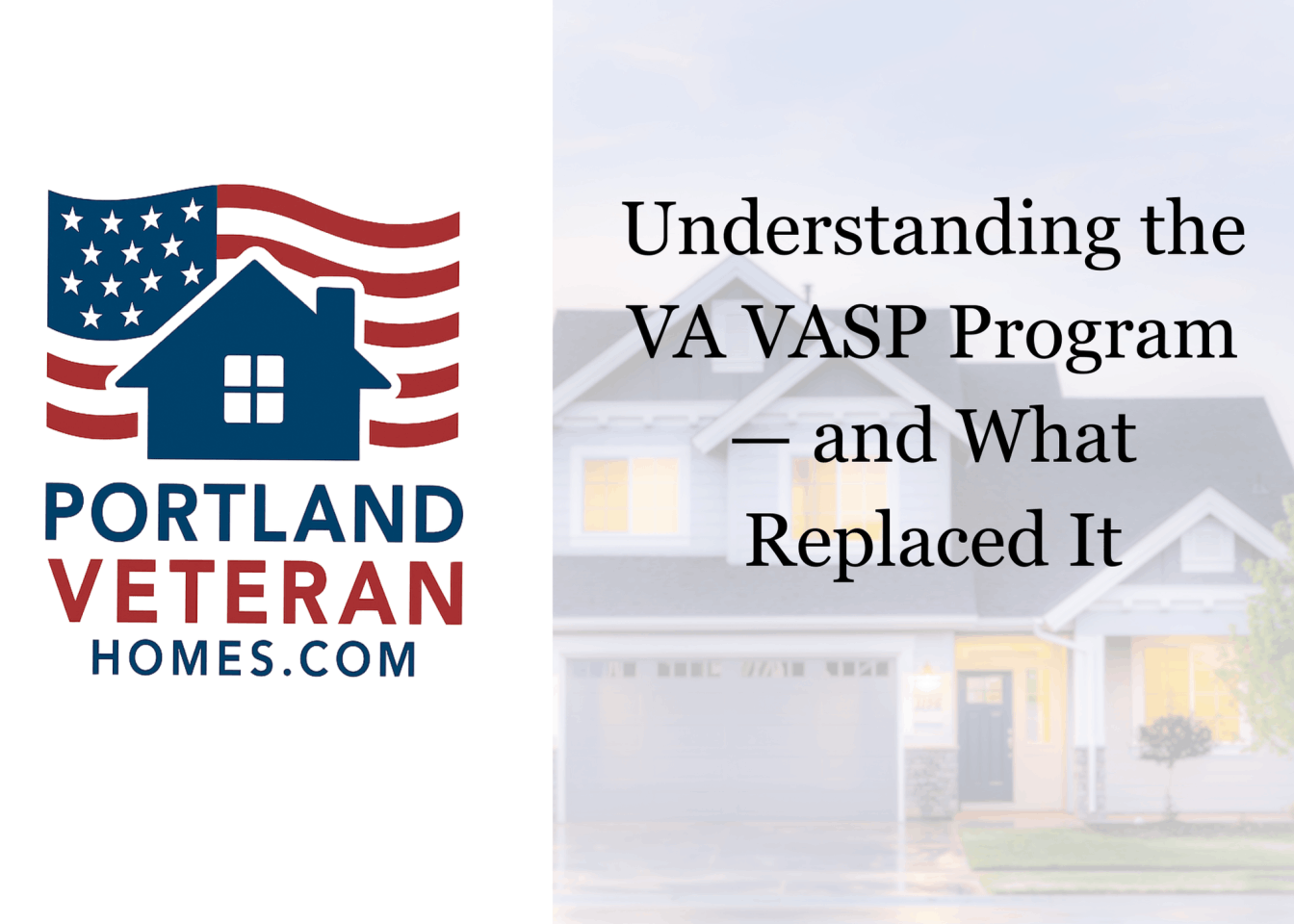Understanding the VA VASP Program and What Replaced It


What Was VASP?
The Veterans Affairs Servicing Purchase (VASP) program was a foreclosure-avoidance tool designed specifically for Veterans and military families with VA-backed home loans.
When borrowers fell behind and couldn’t catch up through standard repayment or modification plans, VASP allowed the VA to purchase the loan from the private servicer. Once VA owned the loan, it would restructure the terms — most notably offering a fixed 2.5% interest rate and in some cases extending the term up to 40 years — so the Veteran could keep the home and get back on stable footing.
VASP wasn’t something you applied for directly. Instead, your loan servicer evaluated whether you met the criteria after going through other VA “home retention” steps. If you qualified, they referred you into the program.
In short: VASP was the safety net of safety nets — the last option before foreclosure.
How It Fit with Other VA Tools
The VA has two purchase authorities for delinquent loans:
• tVAP (traditional VA purchase): Case-by-case purchases handled directly by the VA.
• VASP (Veterans Affairs Servicing Purchase): A streamlined process with clear criteria, handled via your loan servicer.
VASP was far more standardized and accessible, which is why it became an important fallback for struggling Veterans.
Program Ended in 2025
As of May 1, 2025, the VA officially ended the VASP program. Servicers can no longer submit new loans for purchase through VASP, whether or not the borrower had started a trial payment plan.
Why? The VA stated that broad loan restructuring isn’t part of its long-term structure or mission. Critics point out that without a replacement, thousands of Veterans could face higher risk of foreclosure.
Borrowers already enrolled remain protected under their VASP terms — but no new cases are being accepted.
What Options Exist Now?
With VASP gone, here’s what remains:
• Repayment Plans — spreading missed payments out over time.
• Forbearance — temporary pause or reduction in payments.
• Loan Modification — adjusting the existing loan terms through your servicer.
• Traditional VA Purchase (tVAP) — still exists but is far more limited than VASP was.
The gap is clear: unlike FHA loans, VA borrowers don’t have a “partial claim” option where a portion of the loan is set aside to be repaid later. This missing piece is why industry experts are pushing Congress to authorize a new solution for Veterans.
What This Means for Veterans
If you or someone you know is behind on a VA-backed mortgage:
• Don’t wait. Contact your servicer early to explore repayment or modification.
• Understand that VASP is no longer available for new cases.
• Keep an eye on legislative updates — Congress is considering new tools to fill the gap.
Bottom Line
The VA VASP program was a lifeline for Veterans at risk of losing their homes. With its closure in May 2025, the safety net is thinner. That means Veterans and their families need to act faster, work closely with their servicers, and know their rights and options.
Need help navigating VA home loans or foreclosure-avoidance options?
I specialize in guiding Veterans through every step of the real estate process, including working with VA loan programs. Reach out today, let’s make sure you’re protected and positioned to succeed.
Northwest Realty Source
Principal Broker/Owner
Veteran-Marine Corps Sgt. Fox 2/4
Text or Cell 503.997.4169
